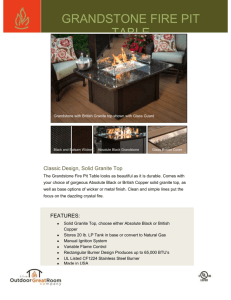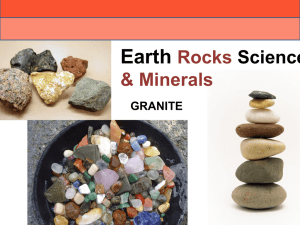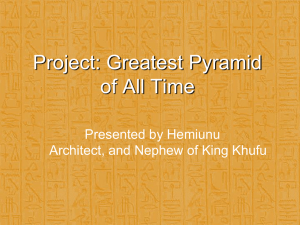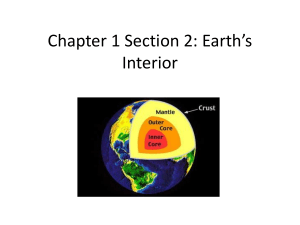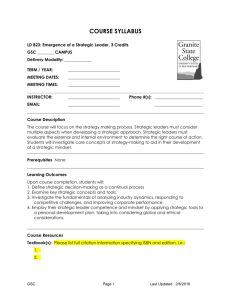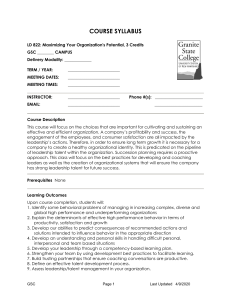Granite Landscapes
advertisement
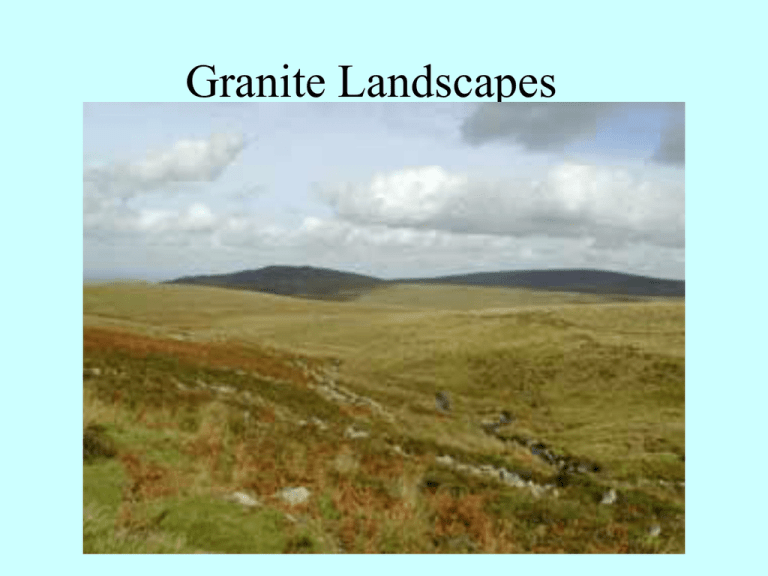
Granite Landscapes The nature of Granite. • The name Granite comes from Latin granum, a grain. • Granite is an igneous, crystalline rock. • Granite is made up of large interlocking crystals that give it a granular texture. Granite • It has great physical strength and is resistant to erosion. • There are many types of granite which all share certain characteristics. • They contain Quartz, Mica and Felspar. • Three hundred million years ago the rocks at the bottom of the crust became heated enough to be turned into magma which floated up into the surrounding rock. • This magma did not reach the earth's surface but cooled and crystallised into a vast mound of granite below the surface, called a batholith, below the south west of England. • During the millions of years since the granite's formation the rocks above have been weathered away exposing the granite, but it is the cracks in the granite that allow the rock to quarry itself The Main processes of weathering on granite are:- • FREEZE THAW • and • HYDROLYSIS Characteristics of Granite landscapes include:• Exposed large scale batholiths, which form mountains. Examples include the Wicklow mountains and Dartmoor. • Tors are isolated masses of bare rock.They can be up to 20m high, such as Hay Tor and Yes Tor. Some of the boulders of rock are attached to part of the bedrock; others merely rest on top. Formation of Tors • The shape of the Tors is determined by the granite's two types of cracks vertical and horizontal. • The vertical cracks formed by contraction of the granite as it cooled. • The horizontal cracks probably formed as pressure was released from overlying rocks being eroded away • Apart from the Tors it is the barrenness and bleakness that makes the Dartmoor landscape distinctive. • This is because the soil here is acid and not many plants can survive apart from heather and moor grass. • Rain is naturally acid and granite doesn't provide any minerals that can neutralise the acidity. • The granite is rich in quartz (silica) and low in potassium and calcium that would help neutralise the acidity. • Quartz is also the most resistant part of the granite, so the soils that form are very sandy.


